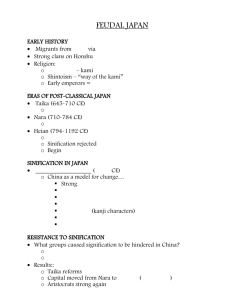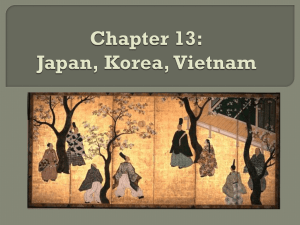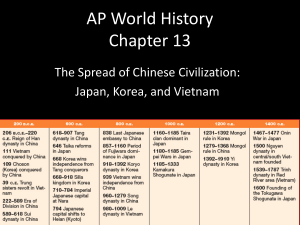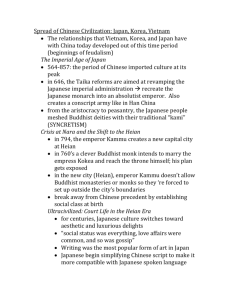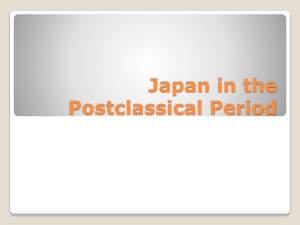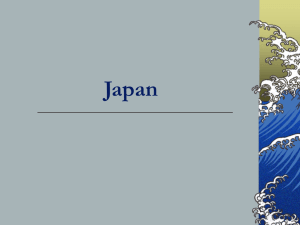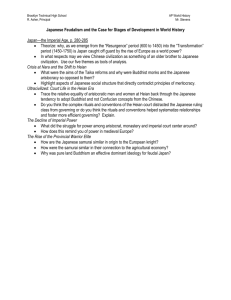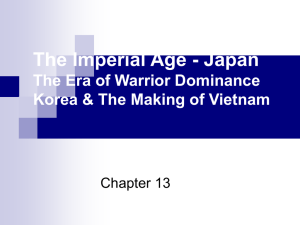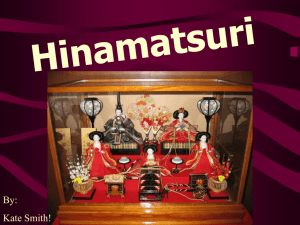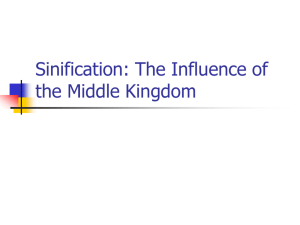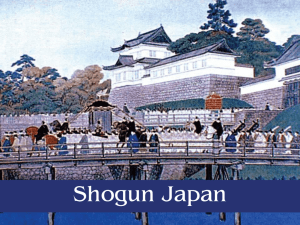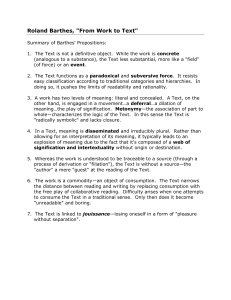Chapter 13: PowerPoint Guided Notes - Post
advertisement
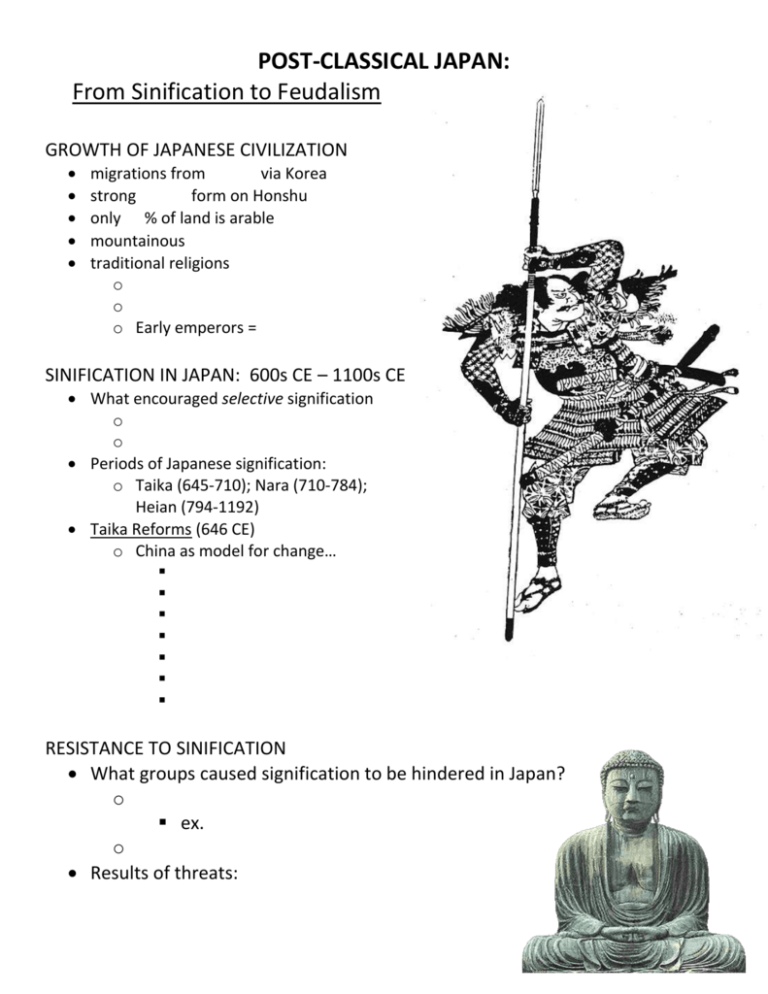
POST-CLASSICAL JAPAN: From Sinification to Feudalism GROWTH OF JAPANESE CIVILIZATION migrations from via Korea strong form on Honshu only % of land is arable mountainous traditional religions o o o Early emperors = SINIFICATION IN JAPAN: 600s CE – 1100s CE What encouraged selective signification o o Periods of Japanese signification: o Taika (645-710); Nara (710-784); Heian (794-1192) Taika Reforms (646 CE) o China as model for change… RESISTANCE TO SINIFICATION What groups caused signification to be hindered in Japan? o ex. o Results of threats: o Chinese culture continues to blend o capital moved from Nara to (Kyoto) o aristocrats strong again o emperor’s power restricted o rural leaders establish militias IMPERIAL LIFE AT HEIAN: 794 CE – 1192 CE real imperial political power melted away as rural aristocracy battled for control life in imperial court: o o o Described by female writers The Pillow Book by Sei Shonagon (900s CE) FEUDALISM ERODES CENTRALIZED POWER By mid-800s CE, aristocratic family influence over imperial court gained: o policy-makers, administrators, royal marriages overlook countryside, banditry & crime grows Local powers dominant in rural provinces o o Rural feudal kingdoms o led by (later “daimyo”) o o build up forces SAMURAI bushido: seppuku: o fulfill bushido (self-sacrifice) o o jigai = seppuku for JAPAN’S FEUDAL ERA: c1185 CE – c1600 CE families compete for imperial control o ex. (1180-1185) Peasants face hardship Minamoto establish : o military government = o as military dictator backed by local (rural warlords) & their Feudalism creates sense of stability Ashikaga Shogunate (1338 CE – 1573 CE) o Minamoto overthrown by Ashikaga civil war over claims of new shogunate 1467-1477 Heian (Kyoto) destroyed Shogunate dismantled JAPANESE FEUDAL STRUCTURE
